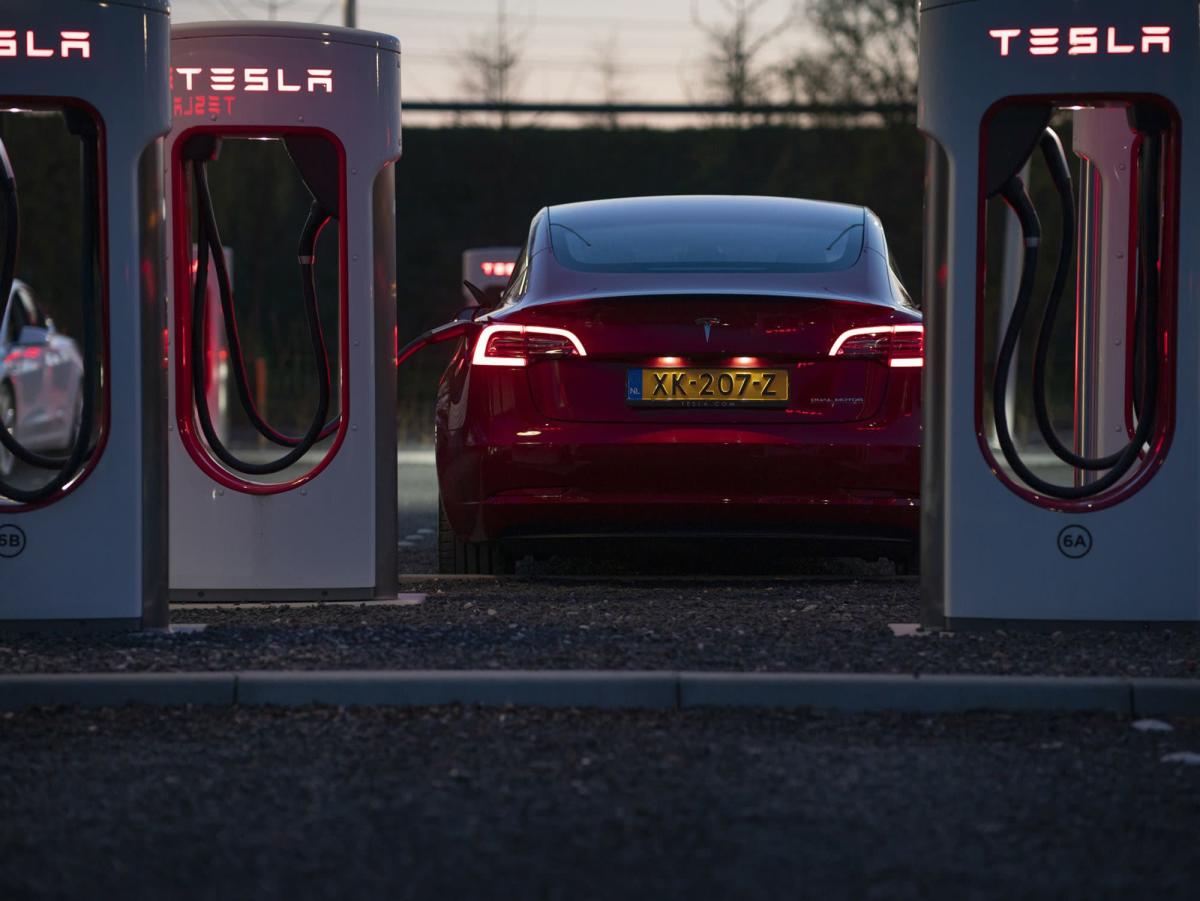
(Bloomberg) — Tesla Inc. set a record for profit but warned that supply chain problems will keep it from introducing new vehicle models this year while it focuses on expanding production of its current lineup.
That means fans of the Cybertruck will have to wait until at least 2023. On the other hand, full self-driving features are coming this year, and a humanoid robot is on the fast track for development, said Chief Executive Officer Elon Musk.
The automaker, headquartered in Austin, Texas, reported fourth-quarter earnings of $2.88 billion, or $2.54 a share, excluding some items, on strong sales of its mass-market models. That was above analysts’ estimates of $2.36 a share.
Tesla delivered more than 936,000 vehicles worldwide in 2021, up 87% from the year before and above the 50% average annual expansion projected over the course of several years. But it’s now cautioning the shortages that cut sales for most other major automakers will squeeze Tesla, too.
“Our own factories have been running below capacity for several quarters as supply chain became the main limiting factor, which is likely to continue through 2022,” Tesla said.
Shares of Tesla were little changed in extended trading after initially falling sharply. The stock advanced 2.1% to $937.41 at the close Wednesday in New York and is down 11% this year.
“The commentary on the risk factors is taking on a different weight in the current environment,” said Gene Munster of Loup Ventures. “Whenever there are unknowns about the future it can spook investors a little bit.”
Revenue for the quarter grew 65% to $17.7 billion, compared with estimates of $16.6 billion, the company said Wednesday, with projections for growth “comfortably above 50% in 2022,” executives said on a call with investors.
Read more: Tesla runs most-productive auto factory in America.
After being absent from the earnings call last quarter, Musk rejoined Wednesday to update Tesla’s “product roadmap.” He confirmed that in 2022 the company won’t be introducing the Cybertruck, a prototype Musk recently said he is personally testing at Tesla’s new factory in Austin, or any other new models until 2023. He was also asked about the prospect for a $25,000 vehicle, which would make his cars affordable for many more buyers.
“We will not be introducing new vehicle models this year, it would not make any sense, because we’ll still be parts constrained,” he said.
The company’s key goals this year will be scaling up output at existing factories, while scouting for new locations and achieving full-self-driving for its vehicles.
In Texas, the company has begun producing the Model Y with 4680 battery cells, he said. Deliveries will start after final certification, which he said should be “fairly soon.”
Musk also called out work on the Optimus Human Robot, which he said has “the potential to be more significant than the vehicle business over time.” He said humanoid robots could help address labor shortages in the future.
Read more: Tesla sees human robots surpassing car business
Their first use will be in Tesla’s own factories, he said.
The company’s fourth-quarter automotive gross margin, a key measure of profitability, grew to 30.6%, or 29.2% without regulatory credits, a slight improvement from last quarter.
The quarterly results allowed Tesla to turn a profit in consecutive years for the first time since its founding in 2003.
Tesla has generated billions in revenue by helping other automakers comply with stricter emissions regulations, although it doesn’t specify how much is coming from particular manufacturers or give regional breakdowns. Revenue from those credits came to $314 million, up from $279 million in the prior quarter.
Tesla also said its cost per vehicle dropped to $36,000 in the last half of 2021.
©2022 Bloomberg L.P.